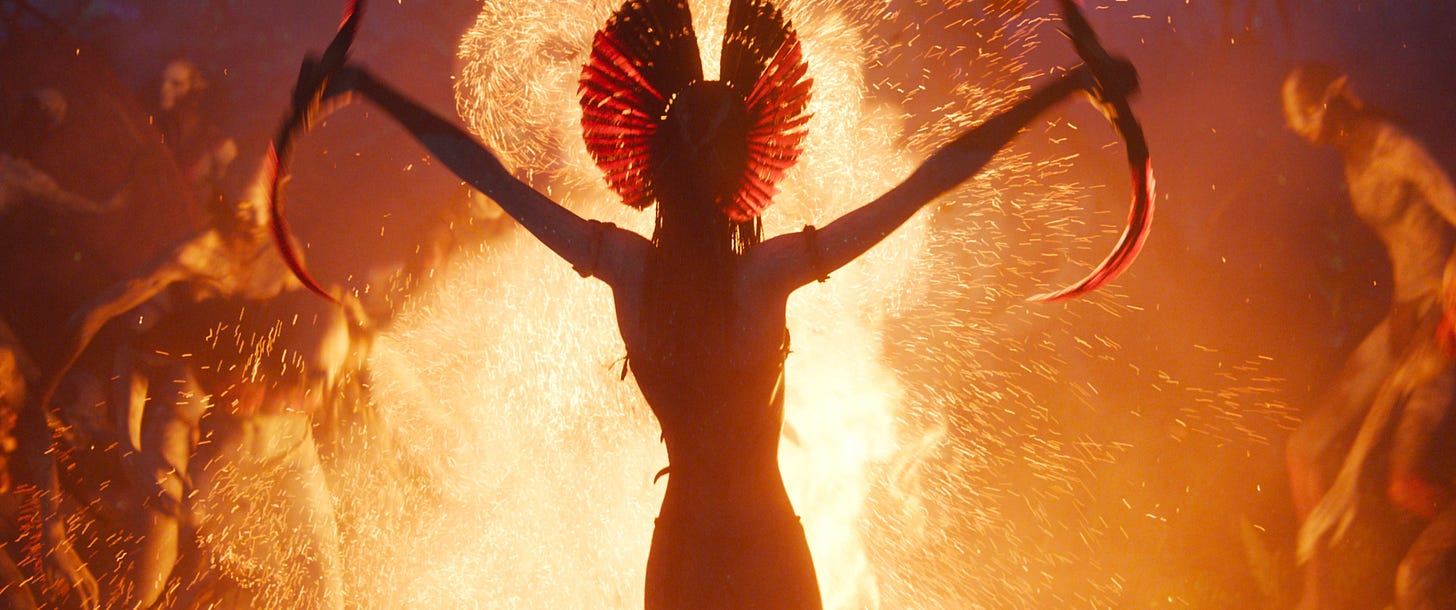Jim Cameron, I am begging you to put an intermission into Avatar 3
I cannot hold my bladder or bowels for three straight hours.

Movies are getting long again! And that’s cool, there’s nothing wrong with a film having a long duration, as long as the narrative is still compelling and engaging for that entire span!
But it’s important for a film director to have the proper etiquette for a long film. After all, if you’re going to ask for such a time commitment from the theatrical audience, it is only proper to respect the audience in how you edit and pace your film. And there seems to be a forgotten piece of that puzzle: the intermission.
While the intermission was originally a technical requirement in the early 1900s to swap out one film reel for another, by the longer-running films of the 1950s it served a purpose of giving people a bathroom break, and allowing them to purchase more snacks. If you’ve ever seen Let’s All Go to the Lobby, the snipe exists for that very purpose, to tell audiences to go buy more snacks during the intermission.
But by the latter half of the century, intermissions had gone extinct in North American cinema in order to facilitate an increased number of showtimes per day, and thus increase the number of tickets sold. In 1982, Gandhi would be the last major film for a while to feature an intermission, as the runtime was over three hours long.
Without intermissions, films have naturally self-regulating lengths; longer films go for 150 minutes to avoid punishing audience members with weak bladders, and most commercially viable films punch for roughly two hours in order to cram in as many showtimes as possible each day.
Unfortunately, Canadian pioneer James Cameron, film director and submarine enthusiast, disagrees with such “self-regulating lengths”. He’s on a mission to make you piss your pants.
In 2022, Jim Cameron released Avatar: The Way of Water, the second film in his sci-fi epic saga, with a runtime of 192 minutes, one minute longer than Gandhi was in 1982. And while I normally never have a problem holding my large popcorn or my large soda in my bladder and my bowels until the film is over, I have to admit that Avatar 2 made me struggle in a way I never have before.
Once the credits started rolling in the IMAX theatre and the lights came up, I checked on my phone to make sure there was no post-credits scene, and then immediately bolted up to find the nearest washroom. That’s not normal for me; I usually like to sit for the credits, both to take in the emotional experience of the film, and pay respect to everyone on the crew who made the film!
But we have to be honest about biology here. A large soda at Cineplex appears to be roughly 750 mL of volume with the regular soda still larger than a normal 500 mL bottle. And for your other hole, popcorn of any size is rich in fibre and will grease up your intestines like a prize hog.
That’s what I mean by “self-regulating lengths”, film directors normally don’t want their film to be so long that people piss and shit on the theatre seats. Jim Cameron, however, is taking the third Avatar film, Fire and Ash, to a new franchise record of 195 minutes, three more than the last one.
Back in 2022, when he was asked how audiences should time a bathroom break, Cameron flippantly said “Any time they want. They can see the scene they missed when they come see it again.” And I really don’t know what to say to a director who fully admits he’s spending ungodly amounts of money to create films where he expects people to miss random plot-relevant scenes.
The thing that really bothers me is that Jim Cameron is actually uncommon in this regard. Other films have stretched to epic lengths in the last ten years, but they’ve embraced the intermission as a fundamental aspect of the presentation. When Quentin Tarantino presented The Hateful Eight on 70mm film in 2015, he included a twelve-minute intermission in the 172-minute runtime.
And as a teenager seeing the film with my dad and my sister, we were very thankful for that intermission! Not only could we go to the bathroom and clear ourselves out, we also had enough time to get more snacks, which is great for the cinema as they make far higher profits on the concessions than the tickets, which they have to split with the studio.
Last year’s Academy Award-winning epic period drama, The Brutalist, clocks in at a whopping 215 minutes, and yet that length is far more bearable than Avatar 2 was or Avatar 3 will be, because it includes a fifteen-minute intermission. Not only are these intermissions useful for the audience and commercially beneficial to the cinema, they also serve as a dramatic tool to provide suspense between the first and second halves of the film.
And the biggest point that Cameron needs to consider? He might not have a choice. Many international screenings of films will always have intermissions, because it is simply the cultural trend in that country; if the film does not have an intermission included by the director, they will simply jam one in randomly between scenes.
This is most notable in India, where the extra revenue from doubling concession sales means theatres are largely unwilling to remove intermissions. Personally, while I think this can compromise the experience of a film if there is no intermission scripted, I also think that directors need to keep in mind that there are well over a billion people who live in places where an intermission is expected by the audience.
So, one final parting thought for Jim Cameron and his peers: Long movies need intermissions. And if you aren’t prepared to include an intermission?
Don’t make a long movie!

